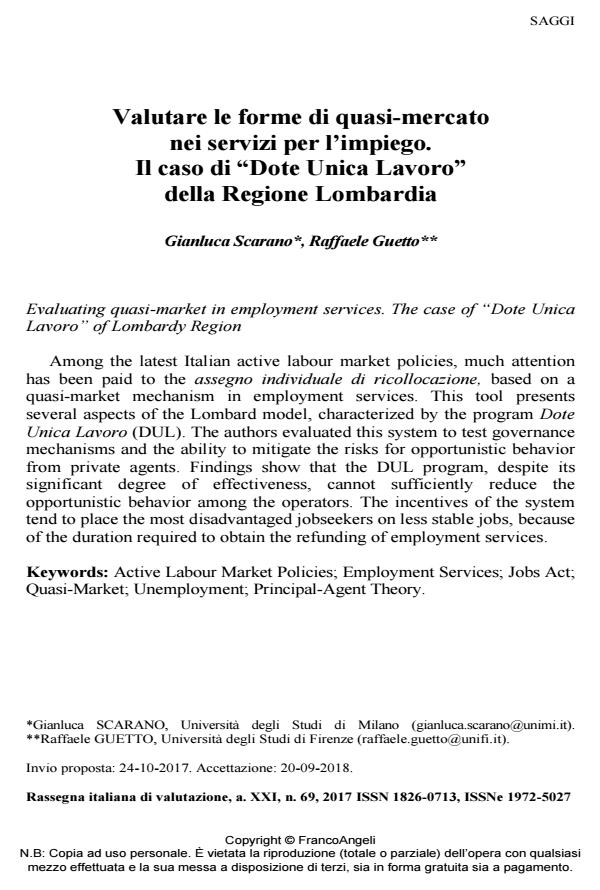Evaluating quasi-market in employment services. The case of "Dote Unica Lavoro" of Lombardy Region
Journal title RIV Rassegna Italiana di Valutazione
Author/s Gianluca Scarano, Raffaele Guetto
Publishing Year 2019 Issue 2017/69
Language Italian Pages 24 P. 9-32 File size 588 KB
DOI 10.3280/RIV2017-069002
DOI is like a bar code for intellectual property: to have more infomation
click here
Below, you can see the article first page
If you want to buy this article in PDF format, you can do it, following the instructions to buy download credits

FrancoAngeli is member of Publishers International Linking Association, Inc (PILA), a not-for-profit association which run the CrossRef service enabling links to and from online scholarly content.
Among the latest Italian active labour market policies, much attention has been paid to the assegno individuale di ricollocazione, based on a quasi-market mechanism in employment services. This tool presents several aspects of the Lombard model, characterized by the program Dote Unica Lavoro (DUL). The authors evaluated this system to test governance mechanisms and the ability to mitigate the risks for opportunistic behavior from private agents. Findings show that the DUL program, despite its significant degree of effectiveness, cannot sufficiently reduce the opportunistic behavior among the operators. The incentives of the system tend to place the most disadvantaged jobseekers on less stable jobs, because of the duration required to obtain the refunding of employment services.
Keywords: Active Labour Market Policies; Employment Services; Jobs Act; Quasi-Market; Unemployment; Principal-Agent Theory.
Gianluca Scarano, Raffaele Guetto, Valutare le forme di quasi-mercato nei servizi per l’impiego. Il caso di "Dote Unica Lavoro" della Regione Lombardia in "RIV Rassegna Italiana di Valutazione" 69/2017, pp 9-32, DOI: 10.3280/RIV2017-069002